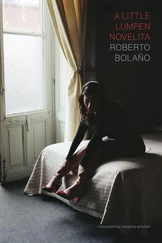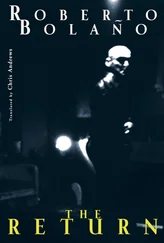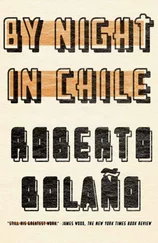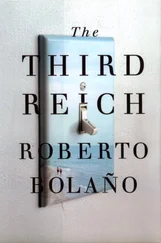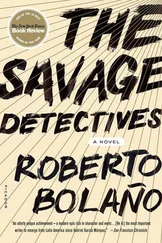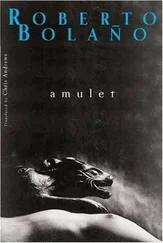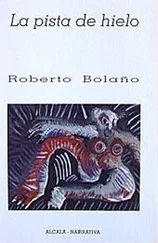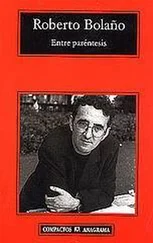Roberto Bolaño - Between Parentheses - Essays, Articles and Speeches, 1998-2003
Здесь есть возможность читать онлайн «Roberto Bolaño - Between Parentheses - Essays, Articles and Speeches, 1998-2003» весь текст электронной книги совершенно бесплатно (целиком полную версию без сокращений). В некоторых случаях можно слушать аудио, скачать через торрент в формате fb2 и присутствует краткое содержание. Год выпуска: 2011, Издательство: New Directions, Жанр: Публицистика, Критика, на английском языке. Описание произведения, (предисловие) а так же отзывы посетителей доступны на портале библиотеки ЛибКат.
- Название:Between Parentheses: Essays, Articles and Speeches, 1998-2003
- Автор:
- Издательство:New Directions
- Жанр:
- Год:2011
- ISBN:нет данных
- Рейтинг книги:4 / 5. Голосов: 1
-
Избранное:Добавить в избранное
- Отзывы:
-
Ваша оценка:
- 80
- 1
- 2
- 3
- 4
- 5
Between Parentheses: Essays, Articles and Speeches, 1998-2003: краткое содержание, описание и аннотация
Предлагаем к чтению аннотацию, описание, краткое содержание или предисловие (зависит от того, что написал сам автор книги «Between Parentheses: Essays, Articles and Speeches, 1998-2003»). Если вы не нашли необходимую информацию о книге — напишите в комментариях, мы постараемся отыскать её.
The Savage Detectives
Between Parenthese
Between Parentheses: Essays, Articles and Speeches, 1998-2003 — читать онлайн бесплатно полную книгу (весь текст) целиком
Ниже представлен текст книги, разбитый по страницам. Система сохранения места последней прочитанной страницы, позволяет с удобством читать онлайн бесплатно книгу «Between Parentheses: Essays, Articles and Speeches, 1998-2003», без необходимости каждый раз заново искать на чём Вы остановились. Поставьте закладку, и сможете в любой момент перейти на страницу, на которой закончили чтение.
Интервал:
Закладка:
** “And I’d like to beg everyone’s pardon because there are people here with long memories, people of high standing, people of great worth, and I’m just a novice.” —tr.
†† “I warn you that instead of a lecture this will be a little chat, nothing formal. This being me, it couldn’t be anything else, since the only formal occasion in my life will be the day I get married.” —tr.
‡‡ “Will experience all kinds of hardship, will have to do a bit of everything.” —tr.
The Maritime Jungle
The name evokes a giant aquarium. But it isn’t an aquarium, it’s the home of the brave. Sometimes: the winter headquarters where the brave go to wait — and despair. More often: the dormitory city where the brave sleep and dream. A strip of land along the sea, and three towns or small cities — the first three cities of the Costa Brava, to the right of the main road from Barcelona — that couldn’t be more different from one another: Blanes, which is older than New York and sometimes seems like a rabid mix of Tyre, Pompeii, and Brooklyn; Lloret de Mar, which resembles nothing but itself, or in other words Flaubert’s Carthage; and Tossa, where there’s a Chagall and the statue of a woman that on foggy days wanders off in search of a nice man. For those coming from elsewhere, it’s hard to reach, that is, there’s a semblance of difficulty about the approaches to the Maritime Jungle, especially if one doesn’t have a car, but the traveler, once he’s here or nearby, realizes with a feeling close to astonishment that this difficulty is basically an illusion. The train only stops in Blanes and the Blanes station isn’t even close to Blanes, properly speaking. The Blanes station is near a factory. Years ago it was explained to me what the factory makes, but by now I’ve managed to forget. All I know is that the factory brought many immigrants to Blanes, and that most of those immigrants went to live in Los Pinos, which was nothing but a pine forest back then and is now a neighborhood of white single-story houses by the sea. Beyond Los Pinos there are campgrounds, a hotel or two, apartment buildings, all kinds of new construction, and beyond that is the Tordera River, and on the other side of the river is the province of Barcelona. But when one reaches Blanes by train all one finds is the station, surrounded by fields, and a bit further on, the barracks of the Guardia Civil, empty most of the time, and the factory that is now a very modern factory and where workers are almost never seen, as if the factory were an office full of clerks and all the hard work was done by machines, though I know that’s not true, because if there aren’t any workers then where did the people come from who settled and built Los Pinos and later La Plantera? But the sense one gets from the factory is of isolation. And that’s what you find when you arrive by train, which is the cheapest way to get to the Maritime Jungle: an empty space, the space of childhood hula-hooping, the timeless space of the Mediterranean, which means fields, trees, and a proud and inscrutable silence. At the Blanes station (which doesn’t resemble a church, like the Toledo station, or a surrealist puzzle, like the Perpignan station, but rather a doorway hidden in the shrubs), the travelers, a single unit until a minute before, go their separate ways, and some catch the bus to Blanes and others the bus to Lloret. If you want to go to Tossa you have to get off in Lloret and take a taxi or ask for directions to the place where the buses leave for Tossa. The three towns of the Maritime Jungle are like three sisters who stopped talking to one another long ago. Let’s start with the one in the middle.
Lloret, and this is one of its main virtues, resembles nothing but Lloret. There is no town on the Costa Brava, no town on the Catalan seaboard, no town or city on the Spanish coast that is anything like it. Lloret built itself and then burned the plans (or burned the architects, which amounts to the same thing). Of course, for lovers of antiquities there are still the second-century Roman ruins of Avellaners, as well as Iberian remains that date back to 250 BC at the Puig Castellet, a settlement of warriors whose function was probably to keep watch over the land. But Lloret is something else: it’s the dream of the European proletariat, it’s alcohol and sex and an architectural mish-mash that will delight the archeologists of the year 4500 (A.D.). Lloret is like Delphos. Lloret is like Alexandria without the library. Lloret is the song of summer translated into cement and bricks and streets that look like a blend of all the streets of Europe, democratic and rapturous streets where young blue-collar Germans meet young blue-collar Dutch girls, where sad English divorcés meet sad French divorcées, where hooligans chant melancholy songs at five in the morning like the Vienna choirboys they never were and always wanted to be, because life is beautiful, yes, but also terrible, and terribly short, and that (too) is Lloret: the mirror of our brevity, our fragility, our well-bred or ferocious happiness. Do I have to say that I think Lloret de Mar is wonderful? There, the last surviving waiters of Spain work their hardest. And the prettiest Spanish girls let themselves be seduced by the most insistent Italian men. Lloret is full of altars, and it doesn’t look like any other city (except perhaps Flaubert’s Carthage), though other cities run the risk of looking like Lloret. Months ago, as I was riding along one of the great boulevards of Berlin, a section of it — some fifteen yards at most — was suddenly transformed into a section of a street in Lloret de Mar. When I told this to the friend of mine who was driving, she replied, with German imperturbability, that it was impossible. We turned around and went looking for that slice of Lloret along the austere avenue. We couldn’t find it. It was just a vision. Or maybe it was the postcards, the flowers, the café tables, the sparkle in the eyes and on the skin of some passersby who were no longer there. To watch day break in Lloret is an exhausting privilege.
Daybreak in Tossa is different. To begin with, in Tossa there’s a Chagall ( The Blue Violinist ), and that sets a place apart. Chagall himself described Tossa as a paradis bleu . From celeste to blue there’s only a blink, a slight shift or fading of the light, and that’s Tossa: a luminiferous expansion and contraction. In other words, Tossa is a miracle. In other words, Tossa is the outcome — always uncertain — of a specific notion of beauty. With scarcely 4,000 inhabitants (Lloret has 15,000 and Blanes 30,000), Tossa is the little sister of the Maritime Jungle, the pretty one, the thin one, and the only one that, in addition to a Chagall, has a statue of Ava Gardner and a ghost. The statue of Ava is life-size and visitors often have their picture taken with her. They’re surprised by her height: she’s short, a bit over five feet, and sometimes one is struck by the suspicion that the statue isn’t really as true to life, especially height-wise, as it claims to be. But it’s Ava, Saint Ava, and she’s in Tossa, where she was as happy as a clam, and at night her ghost rises up from the statue and strolls along the bay of Tossa and along the Moltó and Bona coves, and on moonlit nights it reaches the coves of Giverola and Senyor Ramon. And this isn’t a legend. It’s absolutely true. One rainy spring afternoon I saw Ava walking the slopes of the massif of Cadiretes (behind Tossa).
Tossa has a ghost. Blanes doesn’t. What Blanes has instead is pure energy. I can’t remember when it was that I first came here. All I know is that it was by train and many years ago. Juan Marsé, in Ultimas tardes con Teresa [Last Afternoons with Teresa], turned Blanes into the unattainable paradise of all Spain’s Julien Sorels. I read the novel in Mexico and the sonority of the word Blanes (which comes from the Latin blanda ) enthralled me. We’re all Pijoaparte, but I never guessed that one day I would come to Blanes and that I’d never want to leave. As a desert guidebook (a guide to the desert of the mind) would put it, there are many sights of interest: the Mar I Murtra botanical garden, founded by Karl Faust in 1924, where one can admire more than 4,000 species of trees and plants; the Gothic fountain, the town jewel, built at the end of the fourteenth century by Violante de Cabrera, daughter of the Count of Prades, in the shape of a hexagon with six jets of water and six gargoyles, a fountain so beautiful and modest, there next to the old movie theater, that one asks oneself how it occured to the lovely Violante, where the master craftsmen who built it came from, how we can possibly pass it each day without weeping. And as if that weren’t enough, there’s the Pinya de Rosa botanical garden, founded by Riviere de Caralt and furnished with more than 7,000 species, a garden that definitely makes Blanes a town with a high index of exotic trees and plants; the chapel of Our Lady of Hope, where in the old days the chaplain taught grammar to the town’s children; the twelfth-century chapel of Santa Bárbara from whose bell tower the Blanenses were alerted of the presence of enemy ships; and the chapel of San Juan, built at the highest point in town by Grau de Cabrera in the mid-thirteenth century, which is the first thing one sees when one arrives by train from Barcelona, the tower of San Juan, tall and outlined against the sky and the Mediterranean. But there’s another type of monument or attraction that may be the kind I like best. The black rice at Can Tarrés, for example, or the black rice at Dimas’s restaurant, or the market that every day, except for Sundays, stretches from one end to the other of Calle de Dentro, or the fish market, where the fish are auctioned every day, or the faint presence of the great writer Josep Maria de Sagarra, who in the ’50s summered in Blanes with his young son Joan, or the big old house where Ruyra lived, or the rhapsode Ponsdomènech who still today, as he nears ninety, strolls the town reading his poems to those who need or want to hear them. Blanes is like Ponsdomènech. Blanes is like Violante de Cabrera, who instead of building fortifications or walls, like the rest of her clan, built a “Gothic civil fountain,” in the middle of the street, for the use and benefit of all. Blanes is like the Catalans of the town who went off to fight in Cuba and the Andalusians who came here to work and later left to fight on the fronts of Aragón and the Ebro. Blanes is like its beaches, where each summer Europe’s bravest come to lie in the sun, people from here and from the other side of the Pyrenees, the fat, the ugly, the skeletal, the prettiest girls of Barcelona, children of all kinds, the old, the terminally ill, the hung over, all half naked, all exposed to the Mediterranean sun and the sympathetic gaze of the tower of San Juan, and the smell that rises from the beaches (it’s nice to remember this now, in the dead of winter) is the smell of body lotion, of tanning cream, of sunscreen, a smell that is what it is, of course, but that is also the smell of democracy, history, civilization.
Читать дальшеИнтервал:
Закладка:
Похожие книги на «Between Parentheses: Essays, Articles and Speeches, 1998-2003»
Представляем Вашему вниманию похожие книги на «Between Parentheses: Essays, Articles and Speeches, 1998-2003» списком для выбора. Мы отобрали схожую по названию и смыслу литературу в надежде предоставить читателям больше вариантов отыскать новые, интересные, ещё непрочитанные произведения.
Обсуждение, отзывы о книге «Between Parentheses: Essays, Articles and Speeches, 1998-2003» и просто собственные мнения читателей. Оставьте ваши комментарии, напишите, что Вы думаете о произведении, его смысле или главных героях. Укажите что конкретно понравилось, а что нет, и почему Вы так считаете.

